Venezuela’s protected areas cover over 46% of the national territory, safeguarding biodiversity, and natural heritage. The Atlas Áreas Protegidas de Venezuela Tomo I highlights their ecological and cultural significance.

1.1. Overview of Áreas Protegidas de Venezuela Tomo I
Áreas Protegidas de Venezuela Tomo I is a comprehensive atlas documenting the nation’s protected territories. Published in 2009 by the Ministry of Popular Power for the Environment, it covers 200 zones, including national parks and wildlife refuges. Registered with ISBN 978-980-04-1461-3, this publication is part of a series aimed at raising awareness of Venezuela’s biodiversity and ecosystems, serving as an educational and conservation tool.
1.2. Importance of Protected Areas in Venezuela
Protected areas in Venezuela are vital for preserving biodiversity, safeguarding natural heritage, and ensuring ecological balance. They cover 46% of the national territory, protecting essential water resources and supporting sustainable development. These regions also promote ecotourism, preserve cultural traditions, and maintain hydroelectric power, making them indispensable for environmental, economic, and cultural well-being.
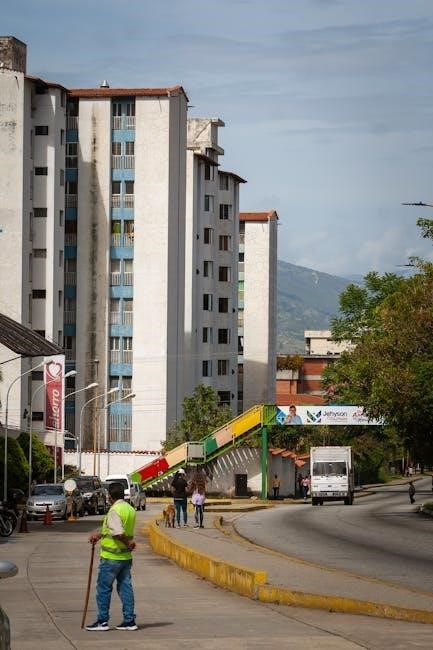
Geographical Coverage of Protected Areas
Venezuelas protected areas cover 46% of the national territory, encompassing diverse ecosystems from tropical rainforests to coastal regions, ensuring extensive biodiversity preservation and ecological balance.
2.1. Total Area Covered by Protected Zones
Venezuelas protected areas cover approximately 46% of the national territory, encompassing diverse ecosystems. The Atlas Áreas Protegidas de Venezuela Tomo I documents this extensive coverage, highlighting the significance of these zones in safeguarding biodiversity and natural heritage.
2.2. Distribution of Protected Areas Across Venezuela
Protected areas in Venezuela are distributed across diverse regions, covering ecosystems from the Guiana Shield to the Andean highlands. National parks, wildlife refuges, and natural monuments are strategically located to preserve unique habitats, ensuring biodiversity and ecological balance. This widespread distribution underscores Venezuelas commitment to safeguarding its natural heritage for future generations.
History of Conservation in Venezuela
Venezuelas conservation efforts began in the 1940s with the establishment of its first national parks. The 2009 publication of Áreas Protegidas de Venezuela Tomo I documents this history.
3.1. Early Conservation Efforts
Early conservation efforts in Venezuela began in the 1940s, with the establishment of national parks and natural monuments. The 1941 law laid the foundation for protecting flora, fauna, and ecosystems. Parque Nacional Médanos de Coro, created in 1987, marked a significant milestone in preserving unique ecosystems. These initiatives underscored the importance of safeguarding natural heritage for future generations.
3.2. Establishment of National Parks and Reserves
The establishment of Venezuelas national parks and reserves began with the 1941 law, creating protected zones for flora, fauna, and ecosystems. Over the years, the network expanded, including 43 national parks, 36 natural monuments, and 7 wildlife refuges. Parque Nacional Médanos de Coro, established in 1987, is a notable example. These reserves were formally documented in the Atlas Áreas Protegidas de Venezuela Tomo I, published in 2009 with ISBN 978-980-04-1461-3.
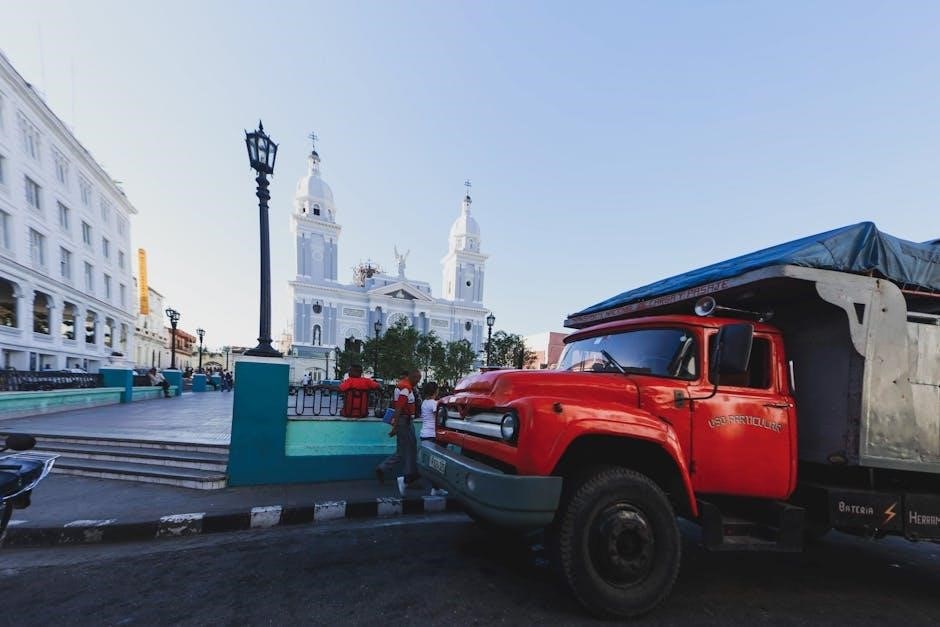
Legal Framework for Protected Areas
Venezuelas protected areas are governed by national laws and international agreements. The 1941 law established the foundation for conservation, while the ISBN-registered Atlas formalizes their legal protection and management.
4.1. National Laws and Regulations
Venezuelas protected areas are safeguarded under national laws, beginning with the 1941 law that established national parks, natural monuments, and wildlife reserves. These regulations, overseen by the Ministry of Popular Power for the Environment, aim to conserve biodiversity, ecosystems, and cultural heritage. The legal framework ensures the protection of these areas, supporting sustainable development and ecological balance while addressing environmental challenges.
4.2. International Agreements and Collaborations
Venezuela participates in international agreements like the Convention on Biological Diversity and collaborates with global organizations to protect biodiversity. The country is home to two UNESCO Biosphere Reserves, demonstrating its commitment to sustainable development. These partnerships enhance conservation efforts, promote ecological research, and ensure the protection of unique ecosystems, aligning Venezuelan initiatives with global environmental goals and fostering international cooperation.
Categories of Protected Areas
Venezuelas protected areas include national parks, natural monuments, wildlife refuges, and biosphere reserves, each designated to preserve unique ecosystems, biodiversity, and cultural heritage, ensuring sustainable conservation efforts nationwide.
5.1. National Parks
Venezuela boasts 43 national parks, protecting diverse ecosystems and natural heritage. These parks cover tropical rainforests, Andean highlands, and coastal dunes, providing habitats for endemic species. They safeguard critical water resources and support hydroelectric power, essential for sustainable development. Legally designated to preserve environmental and cultural treasures, national parks promote biodiversity conservation and eco-tourism, ensuring ecological balance and economic benefits for future generations.
5.2. Natural Monuments
Venezuela’s 36 natural monuments protect exceptional geological formations and landscapes. These areas preserve unique features like tepuis, waterfalls, and coastal ecosystems, fostering scientific research and eco-tourism. Legal protections ensure their conservation, contributing to biodiversity and cultural heritage. Natural monuments complement national parks, offering a balanced approach to environmental preservation and sustainable development in Venezuela.
5.3. Wildlife Refuges and Reserves
Venezuela’s wildlife refuges and reserves safeguard vulnerable species in diverse habitats. With 7 refuges and reserves, they protect wetlands, forests, and grasslands, ensuring survival for endangered flora and fauna. These areas support species recovery programs, maintaining ecological balance and contributing to the nation’s biodiversity conservation efforts, essential for preserving natural heritage.
5.4. Biosphere Reserves
Venezuela’s two UNESCO-recognized biosphere reserves promote sustainability by balancing human activities with biodiversity preservation. These reserves encompass diverse ecosystems like rainforests and unique geological formations, supporting a wide variety of flora and fauna. They foster scientific research and maintain ecological balance, exemplifying Venezuela’s commitment to harmonizing development with nature and contributing to global conservation efforts.

Publication Details
The publication Áreas Protegidas de Venezuela Tomo I is officially registered with ISBN 978-980-04-1461-3 by the Venezuelan ISBN Agency and was published in 2009 in Caracas.
6.1. ISBN and Registration Information
The publication Áreas Protegidas de Venezuela Tomo I is officially registered with the ISBN 978-980-04-1461-3 by the Venezuelan ISBN Agency. Published in 2009 by the Ministry of Popular Power for the Environment in Caracas, this document is part of a series dedicated to cataloging and preserving Venezuela’s protected areas, ensuring accessibility for research and conservation efforts.
6.2. Authors and Contributors
Leonel Vivas, Jesús Alexander Cegarra Rodríguez, and María Teresa Rondón Sulbarán are among the prominent authors and contributors. Their expertise in environmental science and conservation shaped the content, supported by the Ministry of Popular Power for the Environment. The publication is part of a series documenting Venezuela’s protected areas, ensuring accurate and comprehensive information on the country’s natural heritage.
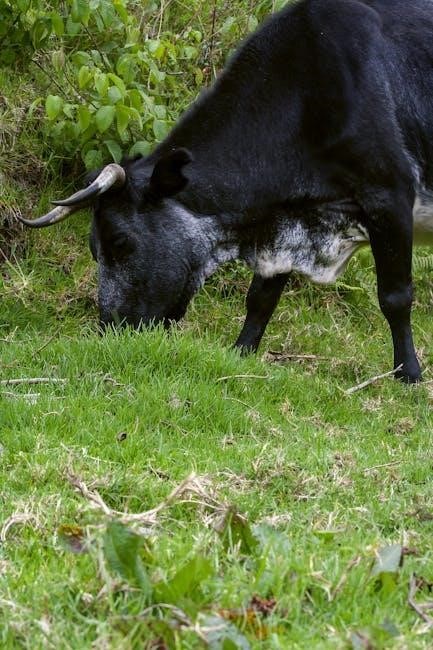
Objectives of Áreas Protegidas de Venezuela Tomo I
The publication aims to document Venezuela’s protected areas and promote environmental awareness, fostering conservation efforts and community involvement in preserving the nation’s biodiversity and natural heritage.
7.1. Documentation of Protected Areas
Áreas Protegidas de Venezuela Tomo I provides a comprehensive record of the nation’s protected zones, detailing 43 national parks, 36 natural monuments, and 7 wildlife refuges. This documentation highlights their ecological and cultural significance, offering insights into unique ecosystems, biodiversity, and conservation efforts. It serves as a vital resource for understanding Venezuela’s environmental heritage and promoting sustainable practices.
7.2. Promotion of Environmental Awareness
Áreas Protegidas de Venezuela Tomo I serves as an educational tool, fostering environmental awareness by detailing the ecological and cultural significance of protected areas. It encourages community involvement in conservation efforts, promoting eco-tourism and sustainable practices. The publication emphasizes the importance of preserving biodiversity and natural heritage, inspiring collective action to protect Venezuelas unique ecosystems for future generations.
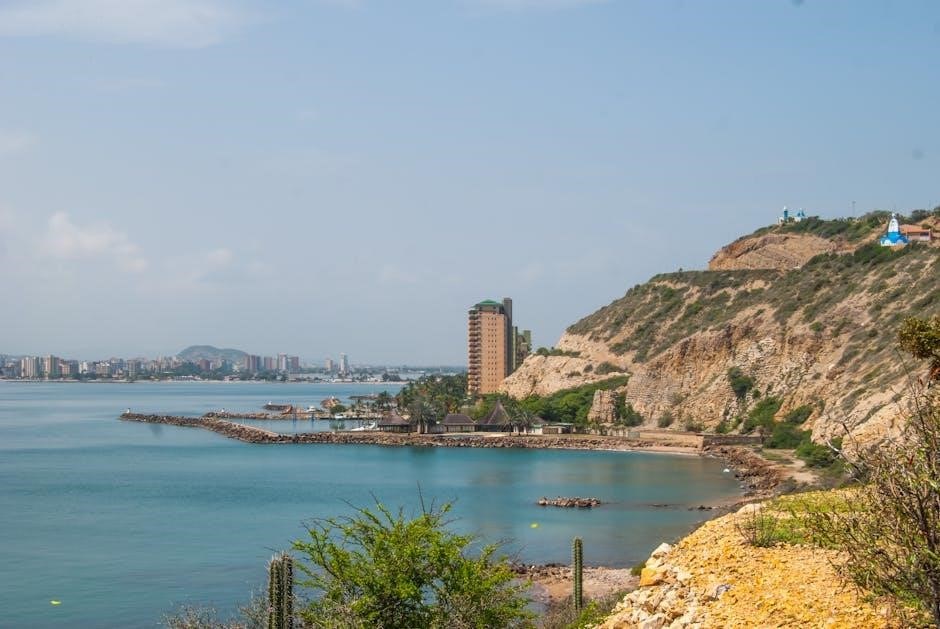
Biodiversity and Ecosystems
Venezuelas protected areas safeguard unique ecosystems, including rainforests, mangroves, and dry forests, supporting rich biodiversity and providing habitats for diverse flora and fauna, essential for ecological balance.
8.1. Unique Ecosystems in Venezuela
Venezuela boasts diverse ecosystems, including tropical rainforests, Andean highlands, and coastal regions. The Guiana Shield features ancient tepuis, while Médanos de Coro showcases arid dunes. Mangrove forests and coral reefs, like those in Los Roques, thrive along the coast. These ecosystems support endemic species and are vital for climate regulation and water supply, making them irreplaceable natural treasures.
8.2. Endangered Species and Their Habitats
Venezuela’s protected areas are home to endangered species like jaguars, giant otters, and harpy eagles. These species thrive in unique habitats, such as Amazonas rainforests, Orinoco Delta wetlands, and Andean mountains. Protected zones safeguard their homes, reducing threats like deforestation and hunting, ensuring survival and maintaining ecological balance in these critical ecosystems.
Ecological Significance
Venezuela’s protected areas are vital for maintaining ecological balance, preserving water resources, and supporting biodiversity. They also play a key role in climate regulation and sustainable development.
9.1. Role in Maintaining Ecological Balance
Protected areas in Venezuela are crucial for maintaining ecological balance by preserving diverse ecosystems, such as rainforests and coastal regions. These areas safeguard water resources, prevent soil erosion, and protect habitats for endangered species, ensuring the stability of natural systems and supporting climate regulation. Their role is vital for biodiversity conservation and sustainable development.
9.2. Contribution to Climate Regulation
Venezuela’s protected areas significantly contribute to climate regulation by preserving ecosystems like rainforests and wetlands, which act as carbon sinks. These regions absorb CO2, mitigate climate change, and maintain water cycles, ensuring climate stability. Their role in protecting biodiversity and natural resources is essential for maintaining ecological balance and supporting global efforts to combat climate change effectively.
Cultural and Educational Value
Venezuela’s protected areas preserve cultural heritage and promote environmental education, fostering community involvement and raising awareness about the importance of conservation and sustainable development practices.
10.1. Preservation of Cultural Heritage
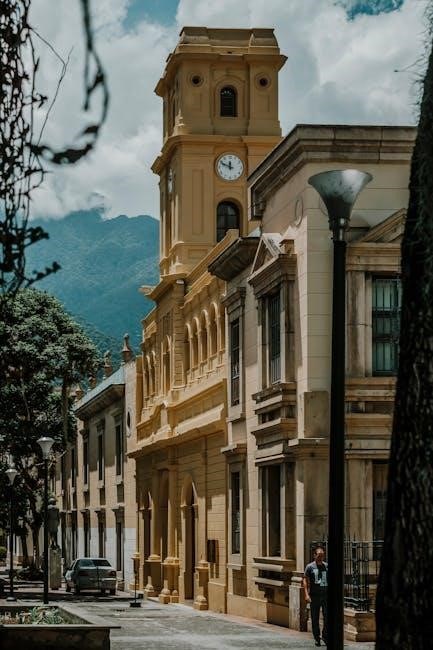
Protected areas in Venezuela safeguard cultural heritage by preserving indigenous traditions, archaeological sites, and historical landscapes. These regions serve as living museums, protecting the nation’s identity and fostering a deep connection between communities and their natural surroundings, ensuring the legacy of Venezuela’s rich cultural diversity endures for future generations.
10.2. Educational Initiatives and Community Involvement
Protected areas in Venezuela promote environmental education through workshops, guided tours, and collaborative projects with local communities. These initiatives foster awareness and participation in conservation efforts, empowering individuals to protect their natural heritage. Community involvement ensures the sustainability of these programs, inspiring future generations to value and preserve Venezuela’s ecosystems and cultural legacy.
Challenges and Conservation Efforts
Venezuelas protected areas face threats like deforestation and illegal mining, but conservation efforts include reforestation, community engagement, and legal protections to safeguard biodiversity and ecosystems.
11;1. Threats to Protected Areas
Protected areas in Venezuela face significant threats, including deforestation, illegal mining, and unregulated agricultural expansion. These activities disrupt ecosystems, threaten biodiversity, and undermine conservation efforts. Climate change and inadequate enforcement of environmental laws further exacerbate these challenges, putting pressure on the sustainability of these vital regions.
11.2. Ongoing Conservation Initiatives
Ongoing conservation initiatives in Venezuela focus on safeguarding biodiversity and ecosystems through reforestation, community engagement, and anti-poaching efforts. Collaborations between government agencies, NGOs, and local communities aim to protect vulnerable species and habitats. Educational programs and sustainable tourism initiatives are also being implemented to promote environmental awareness and support the long-term preservation of protected areas.
Economic Impact
Protected areas in Venezuela contribute to sustainable development and support ecotourism, generating income and fostering economic growth while preserving natural heritage for future generations.
12.1. Role in Sustainable Development
Protected areas in Venezuela play a vital role in sustainable development by safeguarding natural resources like water and hydroelectric power. These regions support eco-tourism and ensure ecological balance, fostering economic activities while preserving biodiversity and cultural heritage for future generations.
12.2. Contribution to Ecotourism
Venezuelas protected areas significantly contribute to ecotourism by offering unique landscapes and biodiversity. National parks, wildlife refuges, and biosphere reserves attract tourists with opportunities for hiking, birdwatching, and exploring rainforests, coral reefs, and tepuis. These regions promote sustainable tourism, supporting local economies while fostering conservation efforts and environmental education, enhancing the value of Venezuelas natural heritage.
International Recognition
Venezuelas protected areas gain international recognition for their role in global biodiversity conservation and sustainable development, aligning with UNESCO biosphere reserves and other international environmental agreements.
13.1. UNESCO Biosphere Reserves
Venezuela is home to two UNESCO Biosphere Reserves, recognized for their unique ecosystems and biodiversity. These reserves promote sustainable development by balancing human activities with environmental conservation, protecting vital habitats for diverse flora and fauna. They exemplify Venezuelas commitment to global environmental agreements, fostering ecological balance and scientific research while preserving natural and cultural heritage for future generations.
13.2. Global Conservation Partnerships
Venezuela engages in global conservation partnerships to protect its biodiversity. Collaborations with international organizations enhance efforts to preserve biosphere reserves and national parks. These partnerships support sustainable practices, promote eco-tourism, and ensure the preservation of unique ecosystems, fostering a unified approach to environmental stewardship and addressing global conservation challenges effectively through shared knowledge and resources.
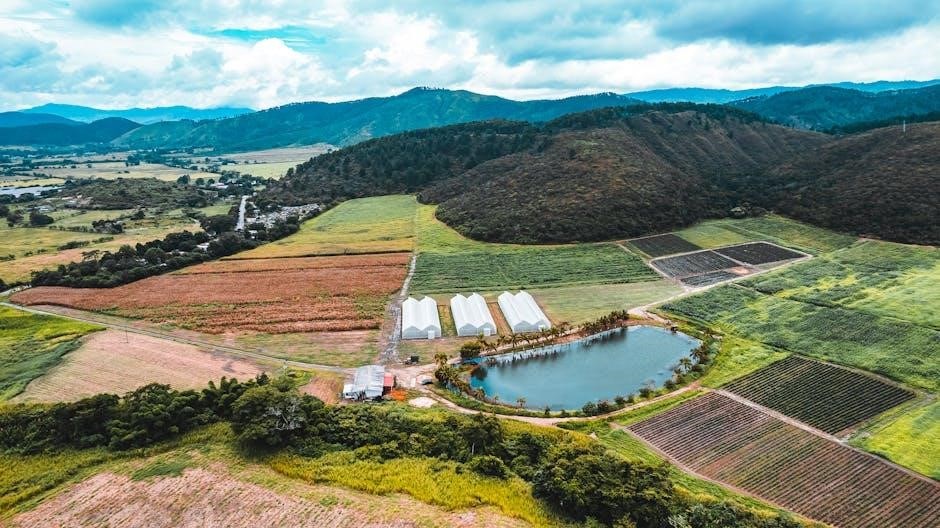
Future Prospects
Venezuela aims to expand its protected areas, focusing on sustainable development and strengthening conservation policies to preserve biodiversity and natural heritage for future generations.
14.1. Expansion of Protected Areas
Venezuela plans to expand its protected areas to safeguard more biodiversity and ecosystems. Efforts focus on identifying new regions for conservation, ensuring the preservation of strategic ecosystems and cultural heritage sites. This expansion aims to enhance ecological balance, promote sustainable development, and involve local communities in protecting natural resources for future generations.
14.2. Strengthening Conservation Policies
Venezuela aims to strengthen conservation policies by updating legal frameworks and enhancing enforcement. This includes integrating international agreements and fostering community engagement. Improved policies will ensure long-term protection of biodiversity, cultural heritage, and ecological balance, while promoting sustainable development and environmental education. Stronger regulations will also address threats like deforestation and habitat loss, safeguarding natural resources for future generations.
Venezuelas protected areas are vital for preserving biodiversity, cultural heritage, and ecological balance. They cover over 46% of the territory, ensuring sustainable development and environmental stewardship for future generations.
15.1. Summary of Key Points
Venezuelas protected areas cover over 46% of its territory, encompassing 43 national parks, 36 natural monuments, and 2 biosphere reserves. These regions preserve biodiversity, cultural heritage, and critical ecosystems, while supporting sustainable development. The Atlas Áreas Protegidas de Venezuela Tomo I highlights their ecological significance, emphasizing the need for ongoing conservation to safeguard these vital natural and cultural resources for future generations.
15.2. Final Thoughts on the Importance of Protected Areas
Protected areas are vital for safeguarding Venezuelas biodiversity, natural heritage, and cultural identity. They preserve unique ecosystems, support climate regulation, and ensure sustainable development. The Atlas Áreas Protegidas de Venezuela Tomo I underscores the necessity of these regions, highlighting their role in maintaining ecological balance and promoting environmental stewardship for future generations.

References and Further Reading
The publication, registered with ISBN 978-980-04-1461-3, is published by the Ministry of Popular Power for the Environment in Caracas, available under Creative Commons License.
16.1. Bibliographical References
The references include publications by the Ministry of Popular Power for the Environment, ISBN-registered books, and scientific articles. Key sources are Atlas Áreas Protegidas de Venezuela Tomo I and research papers on biodiversity conservation, detailing Venezuela’s protected areas, their ecological significance, and cultural heritage preservation.
16.2. Additional Resources for Exploration
For deeper exploration, digital platforms offer Áreas Protegidas de Venezuela Tomo I as a downloadable resource. Institutional websites like the Venezuelan Ministry of Environment and international databases provide supplementary materials, including maps, research papers, and case studies on biodiversity and conservation efforts in Venezuela’s protected areas.
Comments